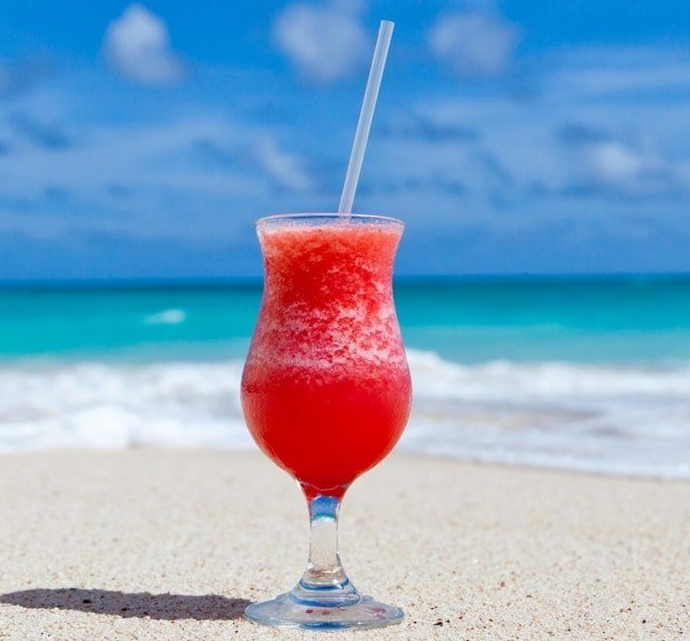Straw: Definition & History of Beverage Straw
How did straw come to be? What were the first applications for straw, and how has it evolved over time? We’re all wondering why plastic straws have become such a nuisance! Is there a war on plastic straws?
Drinking Straw’s Definition
- The straw is a unique shape: a drinking straw is a tube that is open at both ends and allows us to suck up our drinks after they have been dipped in liquid. The straw’s diameter is usually small to allow the consumer’s lungs to suck for a few seconds while he drinks the beverage. The straw can come in a variety of shapes, including cylindrical, straight, or articulated with an accordion.
- The straw, what are the health benefits? Because it reduces the contact of the sweetened drink with our teeth, the straw also reduces the appearance of cavities.
Today, the drinking straw is a widely used item for drinking fruit juices, smoothies, sodas, cocktails or Bubble Tea. But where exactly does the straw come from?
What is the drinking straw’s history?
The very first straw used to drink beer
According to Hors Dornbush, the Sumerians invented the first drinking straws made of precious materials in the 4th millennium BC to enable them to drink beer. It is a seal discovered 3100 years ago that depicts two men drinking beer from a jug with a straw.
It wasn’t until the nineteenth century that straw was modernized after the Sumerians used it. The first straws were made from rye. Rye straw is a huge success because it is more resistant and has a larger diameter. Even though the first natural straws are easily degraded, they are disliked due to a grassy taste that is felt when using them. The straws were not rinsed at the time, leaving a slightly earthy or grassy taste.
The flexible straw appeared at the turn of the 20th century
Marvin Stone, a paper cigarette holder manufacturer, was the first to patent his cardboard paper drink straw, which allowed drinks to be consumed without the seeds becoming lodged in the tube. They are thought to be very powerful but not very useful (flexible).
The straw was not reinforced until 1937, when the flexible straw was invented. Joseph Friedman determined that the straw was too long, not bendable, and difficult to use for his daughter. So he put a screw through the straw and wrapped it in dental floss. The straw could be easily bent without breaking after the screw was removed. He patented his invention and commercialized it by establishing the Flex Straw Company.
The use of collapsible straws in hospitals was a game-changer, allowing patients to drink water while lying down.
The plastic straw is a true innovation.
John Wesley Hyatt invented a process to facilitate the production of celluloid, the first industrial plastic, at the end of the nineteenth century. Maryland Corporation invented the first plastic straw, which was stronger and less expensive to produce than paper straws. Plastic straws quickly became mass-produced disposable products.
According to one of its reports, Plastic Europe produced more than 15 million tons of plastic in 1950, compared to 322 million tons worldwide in 2015.
What is the future of plastic straws?
Plastic straws have become a major environmental concern
However, at the end of the nineteenth and beginning of the twentieth centuries, no one was concerned about the environmental impact that plastic straws could have on our common planet. They were discarded after use and rarely recycled.
Plastic straws are now a major global issue. Only a small percentage of single-use plastic straws used as cocktail utensils are discarded and recycled. Every year, more than 8 million tons of plastic end up in our oceans. Plastic, which takes an average of 100 to 1000 years to decompose, is not going to disappear from the oceans and save our endangered species. Numerous videos, photos, and articles are circulating to demonstrate this issue and are quickly spreading. More than 35 million people have watched the viral video of a turtle crying in agony as a plastic straw is removed from its nose.
The war on plastic drinking straws has begun.
Municipalities, businesses, and governments are stepping up efforts to eliminate the marketing of plastic straws and other disposable accessories (glassware) on the market. Plastic straws, for example, will be prohibited by the Paris City Council at Paris Place next summer 2019. Associations also encourage governments, the public, and the private sector to join the fight against plastic straw pollution in the ocean.
Furthermore, the National Assembly voted on the anti-waste law on Tuesday, January 21, 2020. It bans the use of several single-use plastic products, including straws. Its goal is to throw away less and recycle better, which means using fewer plastic products.
Even if the ecological transition has begun, it will be illegal to use and sell plastic straws beginning January 1, 2021.
Do we need to alter our consumption habits?
We’re all wondering if we’ll be able to drink our smoothies, fruit juices, and other beverages without polluting the environment.
Yes, the answer is yes. Plastic straw alternatives are becoming available, allowing you to do so. Drinking-straw.com has the widest selection of plastic-free alternatives at the best prices:
– Straws for single use: wheat, tapioca rice, or reed
– Edible straws: Apple fiber, paste, and sugar
– Reusable straws: available in the reed, bamboo, stainless steel, and glass.
Are “PLA” straws a “good” alternative?
Many manufacturers have begun to market new drinkware items such as straws made of “PLA,” “corn starch,” “bagasse,” or “biodegradable.”
The term biodegradable implies that an organic product naturally decomposes over time. PLA straws contain organic components but are also made of plastic (up to 30 percent or even 100 percent). It is a solution that, like plastic, will not decompose over time, but will take several hundred years (sometimes more than 500 years). As a result, this straw is a false good solution.
As a result, it is critical to exercise caution when using the term “biodegradable,” which can be misleading and does not imply any correlation with ecological or eco-responsible behavior.
Plastic straw alternatives decompose in a few months (the law requires less than 18 months).
Solutions that combine pleasure and zero waste are possible and have arrived!



